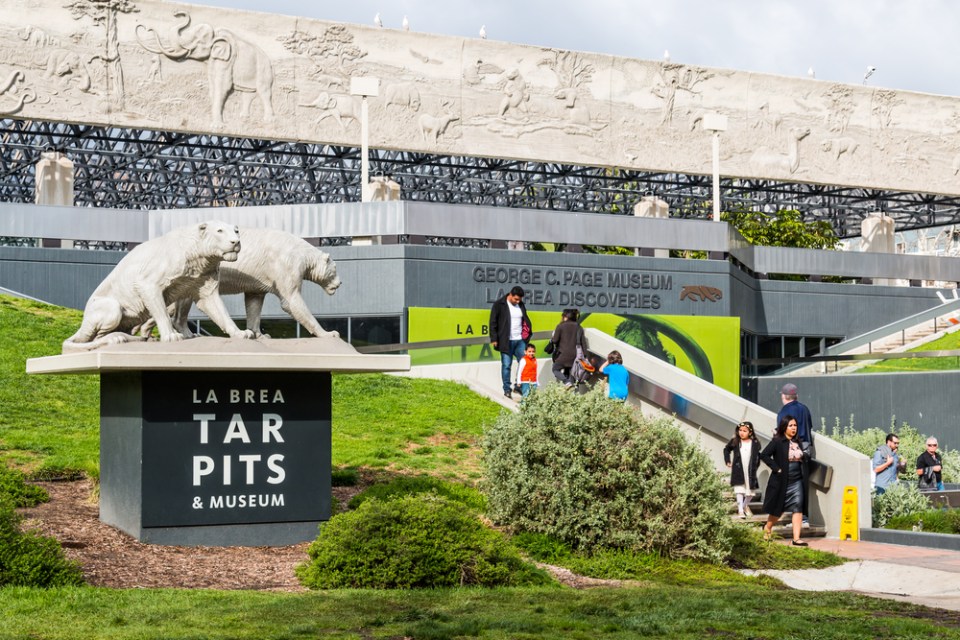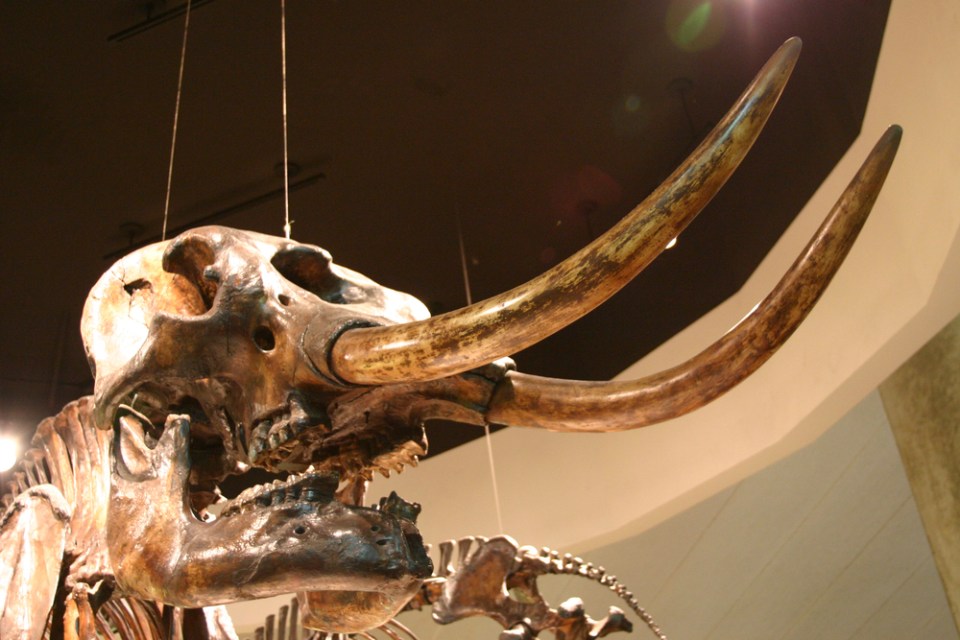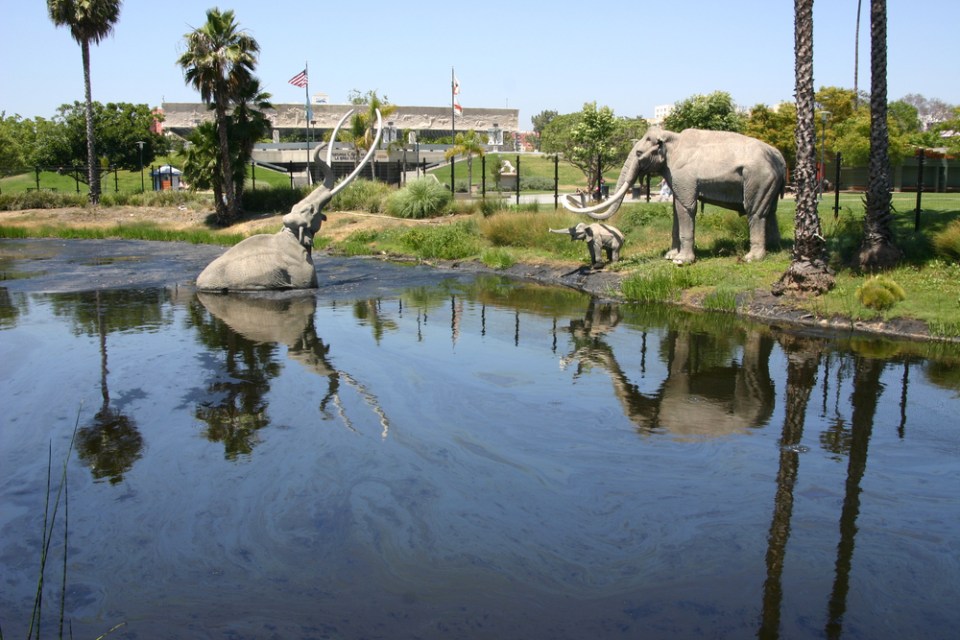Most people associate the city of Los Angeles with rows of palm trees, endless sunshine, and plenty of posh places to eat, drink, and be seen. Lots of folks are unaware that Los Angeles is also home to an ancient crude oil reserve that trapped countless plants and animals in its sticky pools. The La Brea Tar Pits are widely considered to be one of the most important fossil excavation sites in the world. Visitors can watch scientists search for the remains of saber-toothed tigers, dire wolves, and woolly mammoths under the bright California sun.

Photo by depositphotos.com
Since the early 20th century, over one million bones have been excavated from the La Brea Tar Pits. Most of the creatures unearthed from the pits walked the Earth around 50,000 years ago. Virtually every fossil recovered from the La Brea Tar Pits is put on display in the adjacent George C. Page Museum, where visitors can learn more about what the Earth was like when the tar pits first formed.

Photo by depositphotos.com
The iconic Lake Pit features a defunct mining pit with a statue of a woolly mammoth struggling to free itself from a sticky pool of crude oil which still produces large black bubbles. The Lake Pit has a pungent sulfuric smell due to a massive underground oil reserve. Visitors are captivated by sights and smells that seem out of place in modern-day Los Angeles.

Photo by depositphotos.com
The La Brea Tar Pits also feature a Pleistocene Garden with plants that flourished in the region nearly 40,000 years ago. If you’re curious what Los Angeles looked and smelled like before traffic jams, urban sprawl, and exclusive nightclubs were a thing—an afternoon spent exploring the La Brea Tar Pits can transport you back to the days when your greatest concern would be how to avoid getting eaten by a saber-toothed tiger.
Address:
5801 Wilshire Blvd,
Los Angeles,
CA 90036
Click Here to Read the Full Original Article at Unusual Places…